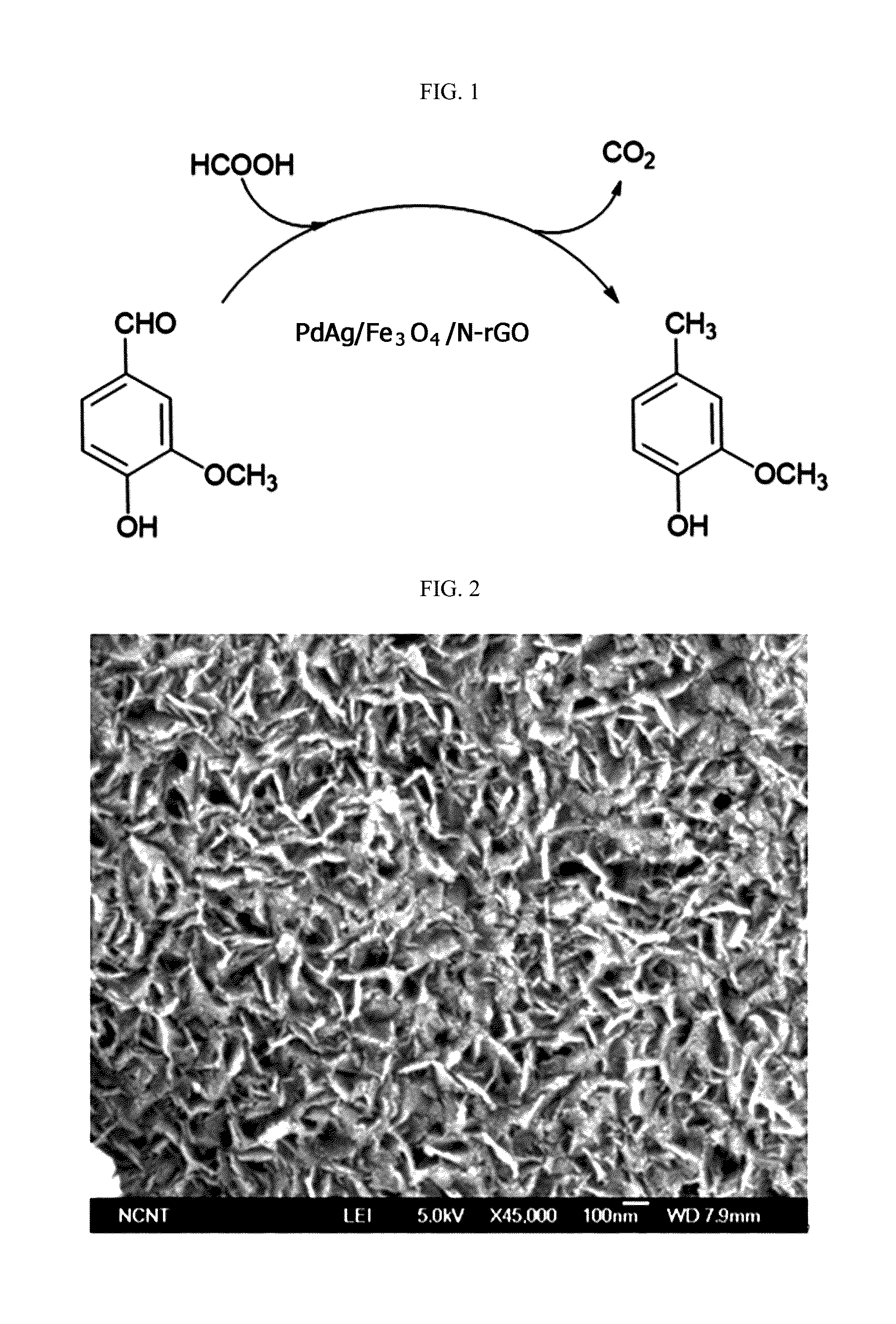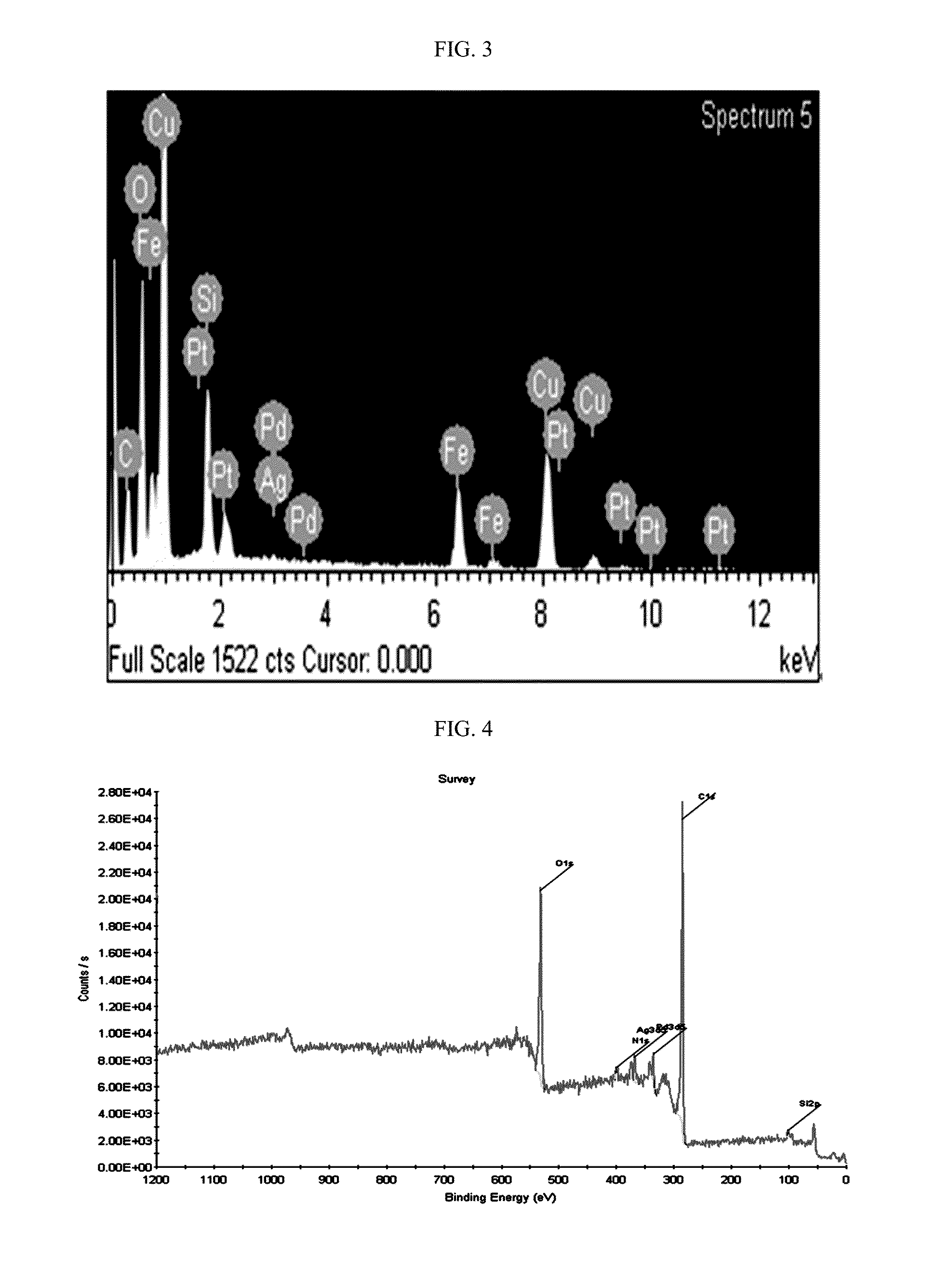Inorganic Nanoparticle Deposited Catalyst For Hydrogenation And Manufacturing Method Of The Same, And Hydrogenation For Biomass Derived Hydrocarbon Compounds
a technology of nanoparticles and catalysts, which is applied in the direction of hydrocarbon preparation catalysts, metal/metal-oxide/metal-hydroxide catalysts, and chemical production. it can solve the problems of not being able to replace conventional fossil fuels, difficult to prepare heterogeneous catalysts under control, and inability to ensure stability as a support. it achieves high selectivity for hydrogenation and high conversion ra
- Summary
- Abstract
- Description
- Claims
- Application Information
AI Technical Summary
Benefits of technology
Problems solved by technology
Method used
Image
Examples
example
S1. Material and Method Used in Experiments
[0087](1) Experimental Material
[0088]Graphite powder, sulphuric acid (95-97%), hydrogen peroxide (30 wt %), potassium permanganate, hydrazine hydrate (65% in water, Aldrich), formic acid (>99%), Pd(NO3)2, AgNO3, HAuCl4, CoCl2.6H2O, PtCl2, FeCl3, FeCl2 and all kinds of organic solvents were received from Sigma-Aldrich Chemicals.
[0089]In each experiment, deionized water (a conductivity of 18.2 mS) was used.
[0090](2) Measurement Method[0091]Wide angle X-ray diffractograms of the synthetic sample was performed using a Rigaku D / max 2500 / PC X-ray diffractometer (Cu Ka (1.54056) radiation)[0092]The surface morphology of thoroughly dried sample was analyzed by a TEM (JEOL JEM 2100F transmission electron microscope, W, Acc.v.: approximately 120 kV). The TEM samples were prepared by dispersing dry powder of catalyst in an ethanol solvent.[0093]For scanning electron microscopy (SEM), gold sputter coating were carried out on desired samples at pressure...
PUM
| Property | Measurement | Unit |
|---|---|---|
| particle size | aaaaa | aaaaa |
| pressure | aaaaa | aaaaa |
| temperature | aaaaa | aaaaa |
Abstract
Description
Claims
Application Information
 Login to View More
Login to View More - R&D
- Intellectual Property
- Life Sciences
- Materials
- Tech Scout
- Unparalleled Data Quality
- Higher Quality Content
- 60% Fewer Hallucinations
Browse by: Latest US Patents, China's latest patents, Technical Efficacy Thesaurus, Application Domain, Technology Topic, Popular Technical Reports.
© 2025 PatSnap. All rights reserved.Legal|Privacy policy|Modern Slavery Act Transparency Statement|Sitemap|About US| Contact US: help@patsnap.com



